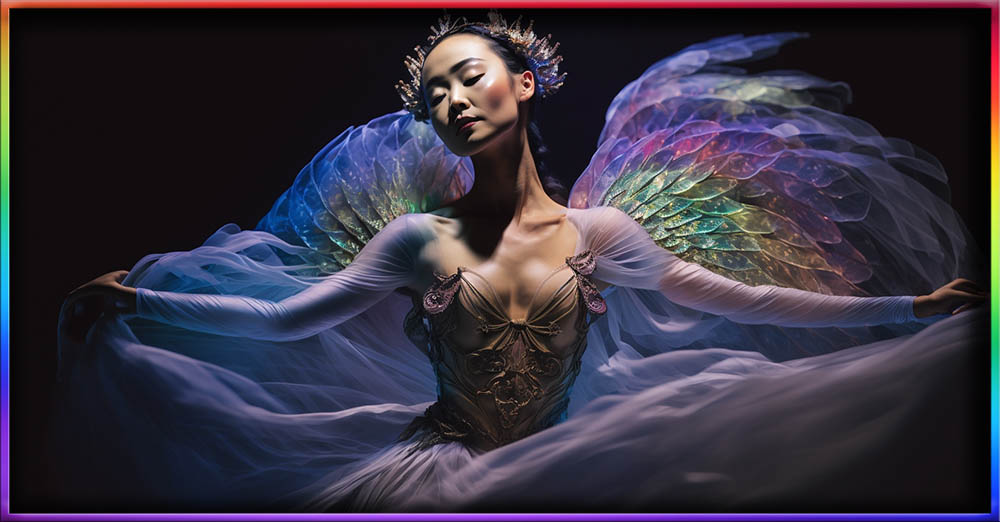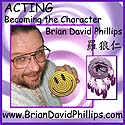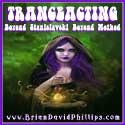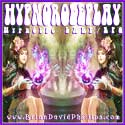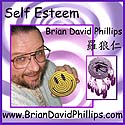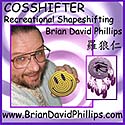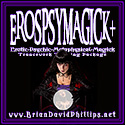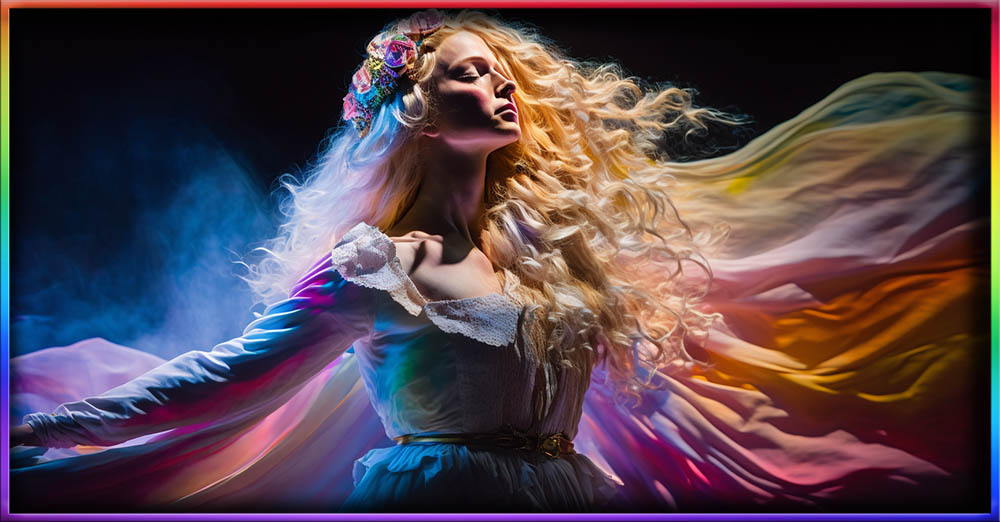
Trance-Acting

Long ago, back when I was in high school, when dinosaurs walked the Earth, I took so many acting classes. I went on to earn undergraduate and graduate degrees in Theatre with specializations in acting and directing. Well, now I’m a professor at university, and I’ve been teaching acting for over three decades. I also began my interest in hypnosis very young (I read my first hypnosis book at the age of ten). Well . . . fun fact . . . these two great tastes go great together!
Acting is an art form that requires actors to inhabit their characters’ thoughts, emotions, and physicality in order to create authentic and compelling performances. To do this, actors must be able to connect with their characters on a deep and intuitive level, accessing emotions and experiences that may be very different from their own. While there are many techniques and approaches that actors can use to help them achieve this level of connection, one that is often overlooked but can be incredibly powerful is the use of trance states.
Trance states are altered states of consciousness that can be induced through various techniques, such as meditation, visualization, and hypnosis. In these states, the brain is in a different mode of functioning than it is during normal waking consciousness, which can make it easier to access deeper emotional states and connect with the subconscious mind. For actors, trance states can be incredibly helpful in allowing them to access their characters’ emotional experiences on a deeper level, and to create more authentic and compelling performances as a result.
In this blog post, we will explore the use of trance states in acting, including how they can be induced, what benefits they offer to actors, and specific techniques that actors can use to enter into a trance-like state. We will also discuss the role of trance states in different acting techniques, such as those developed by Stanislavski, and provide tips for using trance states effectively and safely in acting. By the end of this post, you will have a better understanding of how trance states can enhance your acting performances, and be equipped with practical tools and techniques to incorporate trance into your own acting practice.
What are Trance States?

Trance states are altered states of consciousness that are different from the normal waking state of awareness. In a trance state, the brain’s activity is altered, and the individual may experience heightened focus, relaxation, and altered perceptions. There are many different types of trance states, and they can be induced through a variety of methods such as meditation, visualization, hypnosis, or repetitive activities such as running or dancing.
Trance states have been used for thousands of years in spiritual practices, healing rituals, and shamanic traditions. However, more recently, there has been increasing interest in the use of trance states in psychology, personal growth, and even acting. In acting, trance states can be used to help actors connect more deeply with their characters and performances, accessing deeper emotional states and subconscious experiences that may be difficult to access in a normal waking state.
One of the most significant aspects of trance states is that they can be used to bypass the critical, analytical mind, and connect with the subconscious mind more directly. In a trance state, the brain’s activity shifts from the left hemisphere, which is responsible for logical and analytical thinking, to the right hemisphere, which is associated with creativity, intuition, and emotion. This shift in brain activity can help actors to access deeper emotional states, and connect with their characters on a more profound level. Additionally, the altered state of awareness can make it easier for actors to release self-consciousness and inhibitions, allowing them to fully immerse themselves in their characters and performances.
While trance states can be incredibly powerful, it is important to note that they can also be potentially dangerous if used improperly or without proper guidance. It is essential to approach the use of trance states in acting with caution and awareness, and to work with trained professionals who can help guide the process and ensure safety. In the following sections of this post, we will explore some of the different techniques for inducing trance states in acting, as well as tips for using them effectively and safely.
Benefits of using Trance States in Acting

The use of trance states in acting can provide a wide range of benefits for actors. One of the most significant benefits is that trance states can help actors to connect more deeply with their characters and performances. By accessing deeper emotional states and subconscious experiences, actors can create performances that feel more authentic, grounded, and compelling. They can also develop a more profound understanding of their characters’ motivations, desires, and fears, which can help them to create more nuanced and complex performances.
Trance states can also help actors to access emotional states that may be difficult to reach in a normal waking state. This can be particularly useful for scenes that require actors to access intense emotions, such as grief, anger, or fear. In a trance state, actors can access these emotions more easily and authentically, allowing them to create performances that feel more truthful and powerful.
Another benefit of using trance states in acting is that they can help actors to connect more deeply with their scene partners. By accessing deeper emotional states and connecting with their characters on a more profound level, actors can create performances that feel more connected and truthful. This can lead to more natural and authentic interactions between actors, which can enhance the overall quality of the performance.
Finally, the use of trance states in acting can help actors to overcome performance anxiety and stage fright. By accessing a more relaxed and focused state of awareness, actors can release self-consciousness and inhibitions, allowing them to fully immerse themselves in their performances. This can help to reduce feelings of anxiety and nervousness, and create performances that feel more confident and grounded.
Overall, the benefits of using trance states in acting are numerous, and can help actors to create more authentic, nuanced, and compelling performances. By accessing deeper emotional states, connecting more deeply with their characters and scene partners, and releasing inhibitions and anxiety, actors can create performances that are truly transformative and powerful.
Techniques for Inducing Trance States in Acting
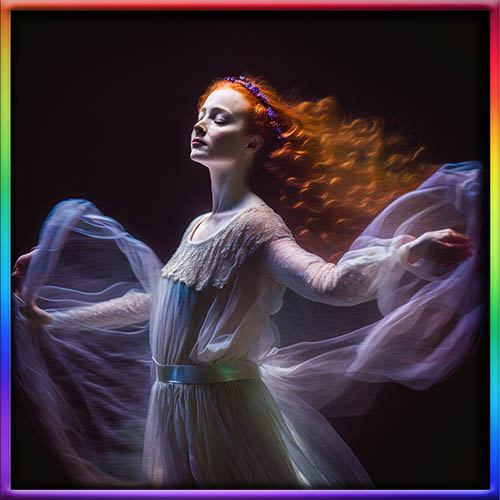
There are several techniques that actors can use to induce trance states in acting. These techniques can be used individually or in combination to create a more powerful and immersive experience.
One of the most common techniques for inducing trance states in acting is visualization. Visualization involves creating a mental image of a specific place, object, or experience, and using this image to guide the trance state. For actors, visualization can be a powerful tool for accessing deeper emotional states and connecting more deeply with their characters. They can visualize the setting of the scene, the emotions of their character, or the reactions of their scene partners, in order to create a more vivid and immersive experience.
Another technique for inducing trance states in acting is breathing exercises. Breathing exercises can help to relax the body and calm the mind, allowing actors to access a more focused and receptive state of awareness. Actors can use deep breathing exercises to slow their heart rate and calm their nerves, which can be particularly useful for reducing performance anxiety and stage fright.
Repetitive activities such as running, dancing, or chanting can also be used to induce trance states in acting. These activities can help to release tension and stress from the body, and create a more relaxed and focused state of awareness. By engaging in repetitive activities, actors can also create a sense of rhythm and flow, which can help to guide the trance state and create a more immersive experience.
Finally, hypnosis can be used to induce trance states in acting. Hypnosis involves a guided relaxation process, in which the individual is led into a state of deep relaxation and focus. This can be particularly useful for actors who struggle with performance anxiety or self-consciousness, as it can help to release inhibitions and create a more confident and grounded performance.
Overall, there are many techniques that actors can use to induce trance states in acting. By experimenting with different techniques and finding what works best for them, actors can create more powerful and immersive performances that connect more deeply with their characters and scene partners. It is important to note, however, that actors should always approach the use of trance states with caution and awareness, and work with trained professionals to ensure safety and effectiveness.
Examples of Stanislavski Exercises that Incorporate Trance States

Stanislavski exercises are a cornerstone of actor training, and many of these exercises can be adapted to incorporate trance states. One of the most well-known exercises is “The Magic If,” in which actors ask themselves “What would I do if I were in this situation?” and use their imagination to create a more authentic and truthful performance. By incorporating trance states into this exercise, actors can access deeper emotional states and create more nuanced and complex performances.
Another Stanislavski exercise that can be adapted to incorporate trance states is “Emotional Recall.” In this exercise, actors use their personal memories and experiences to create emotional connections to their characters and scenes. By incorporating trance states, actors can access these memories more easily and authentically, allowing them to create more powerful and emotional performances.
“The Inner Monologue” is another exercise that can be adapted to incorporate trance states. In this exercise, actors explore their character’s thoughts and motivations, and use this understanding to create more truthful and grounded performances. By incorporating trance states, actors can access their character’s subconscious thoughts and experiences, creating a more complex and nuanced performance.
Finally, “The Given Circumstances” exercise can also be adapted to incorporate trance states. In this exercise, actors explore the specific details and circumstances of their scenes and characters, and use this understanding to create more authentic and grounded performances. By incorporating trance states, actors can access deeper levels of understanding and empathy for their characters, allowing them to create more powerful and truthful performances.
Overall, there are many Stanislavski exercises that can be adapted to incorporate trance states, and actors can experiment with different exercises to find what works best for them. By incorporating trance states into their training and performances, actors can create more authentic, nuanced, and compelling performances that connect more deeply with their characters and scene partners.
Tips for Using Trance States in Acting

In addition to the Stanislavski exercises that incorporate trance states, there are many other techniques and tips that actors can use to enhance their performances with trance states.
Firstly, it is important to create a safe and comfortable space for inducing trance states. Actors should choose a quiet and private space where they can relax and focus without distraction. They should also ensure that they are physically comfortable, with supportive seating and warm clothing if necessary.
Secondly, actors should experiment with different techniques for inducing trance states, in order to find what works best for them. This may include visualization, breathing exercises, repetitive activities, or hypnosis, as discussed in the previous section. Actors should also be aware of their own limits and comfort levels, and should not push themselves too far beyond what feels safe and effective.
Thirdly, actors should work with trained professionals to ensure the safe and effective use of trance states. This may include working with a hypnotherapist, a meditation teacher, or an acting coach who specializes in trance techniques. These professionals can provide guidance, support, and feedback on the use of trance states, and can help actors to develop their skills and confidence in using these techniques.
Fourthly, actors should approach the use of trance states with curiosity and openness, rather than with expectation or pressure. Trance states can be unpredictable and varied, and actors should allow themselves to explore different experiences and emotions without judgment or self-criticism.
Finally, actors should be aware of the potential risks and limitations of using trance states in acting. While trance states can be a powerful tool for accessing deeper emotional states and creating more immersive performances, they can also be overwhelming or triggering for some individuals. Actors should approach trance states with caution and awareness, and should seek professional support if they experience any negative effects or discomfort.
In conclusion, there are many tips and techniques that actors can use to enhance their performances with trance states. By experimenting with different techniques, creating a safe and supportive space, working with trained professionals, approaching trance states with curiosity and openness, and being aware of the potential risks and limitations, actors can create more powerful and authentic performances that connect more deeply with their characters and scene partners.
Ecstatic Eroticatrance and Trance-Acting

Yes, you really can use eroticatrance or erotic trancework hypnosis work . . . to explore things sensual.
As far as hypnosis goes, I do quite a bit of work developing hypnotic processes to ecstatic trance results.
I am particularly interested in adapting traditional methods to contemporary hypnotic methods as well as in creating wholly original methods outside of the traditional model.
Here’s just a sampling of work I have done over the years to very good effect.
Trance-Acting Lecture
You can also see the video at https://www.youtube.com/watch?v=uyIMK3U2csE.
Trance-Acting Demonstration
You can also see the video at https://www.youtube.com/watch?v=yLsyXxeFZqM.
Kishore Namit Kapoor
You can also see the video at https://www.youtube.com/watch?v=M–dkPkYNZs.
Comedian and Actor Navin Prabhakar hypnotized by Brian David Phillips
You can also see the video at https://www.youtube.com/watch?v=uKGB73Xi7uQ.
Actress Raiya Sinha hypnotized by Brian David Phillips
You can also see the video at https://www.youtube.com/watch?v=fv3OspAjsLw.
This is just the tip of the iceberg as you might know from my videos and more. Of course, those wishing to explore even more may consider learning packages such as our ErosPsyMagick+ program at https://briandavidphillips.net/erospsymagickplus which is of particular interest as it has everything rolled into one comprehensive package . . . seriously it’s the whole trancework kit-n-kaboodle.
Trance-Acting Trance States

In conclusion, the use of trance states in acting can be a powerful tool for actors to access deeper emotional states, create more authentic and nuanced performances, and connect more deeply with their characters and scene partners. By inducing trance states through various techniques such as visualization, breathing exercises, repetitive activities, and hypnosis, actors can tap into their subconscious and access a wealth of emotions and experiences that can inform their performances.
While the use of trance states in acting is not without its risks and limitations, actors can mitigate these risks by creating a safe and supportive environment, working with trained professionals, and approaching trance states with curiosity and openness.
Stanislavski exercises, such as “The Magic If,” “Emotional Recall,” “The Inner Monologue,” and “The Given Circumstances,” can be adapted to incorporate trance states, providing actors with a structured framework for exploring their characters and scenes while accessing deeper emotional states.
However, it is important for actors to remember that the use of trance states is not a substitute for proper actor training and technique. Trance states should be viewed as a tool to enhance and augment an actor’s performance, rather than as a replacement for fundamental acting skills such as vocal control, physicality, and text analysis.
Ultimately, the use of trance states in acting is a personal and individual choice, and actors should approach this technique with caution and awareness. With the right guidance, support, and training, the use of trance states can help actors to create more powerful, authentic, and compelling performances that resonate with audiences and leave a lasting impact.
Frequently Asked Questions:
Trance-Acting
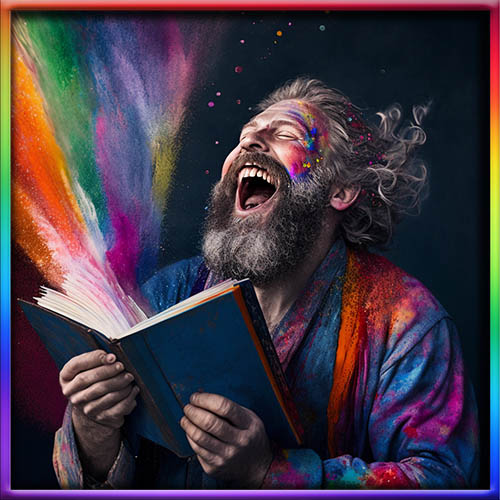
Q: What are trance states?
A: Trance states are altered states of consciousness characterized by deep relaxation, focused attention, and heightened suggestibility. They can be induced through various techniques, such as visualization, meditation, and hypnosis.
Q: How can trance states help actors?
A: Trance states can help actors access deeper emotional states, connect more deeply with their characters, and create more nuanced and authentic performances.
Q: What are the risks of using trance states in acting?
A: The risks of using trance states in acting include the potential for emotional and psychological distress, as well as the risk of losing touch with reality. It’s important for actors to approach trance states with caution and work with trained professionals.
Q: How can actors create a safe environment for using trance states in acting?
A: Actors can create a safe environment for using trance states by working with trained professionals, establishing clear boundaries and expectations, and maintaining an open and supportive attitude.
Q: What are some common techniques for inducing trance states in acting?
A: Common techniques for inducing trance states in acting include visualization, breathing exercises, repetitive activities, and hypnosis.
Q: What is the “Magic If” exercise, and how can it be adapted to incorporate trance states?
A: The “Magic If” exercise is a technique developed by Stanislavski to help actors imagine how they would behave in a hypothetical situation. It can be adapted to incorporate trance states by using visualization techniques to create a vivid mental image of the imagined situation.
Q: How can actors use trance states to access emotional recall?
A: Trance states can help actors access deeper emotional states and memories, which can be used to inform their performances through emotional recall techniques.
Q: What is the inner monologue, and how can it be used with trance states?
A: The inner monologue is a technique developed by Stanislavski to help actors explore their characters’ thoughts and motivations. It can be used with trance states by using visualization techniques to create a vivid mental image of the character’s inner thoughts.
Q: How can actors use trance states to enhance their physicality?
A: Trance states can help actors become more aware of their physical sensations and movements, allowing them to create more authentic and nuanced physical performances.
Q: How can actors balance the use of trance states with other acting techniques?
A: Actors should view the use of trance states as a tool to enhance and augment their performances, rather than as a replacement for other fundamental acting techniques such as vocal control, physicality, and text analysis.
Q: Can actors induce trance states on their own, or do they need professional guidance?
A: While some actors may be able to induce trance states on their own, it’s generally recommended to work with trained professionals who can guide the actor safely through the process.
Q: How long do trance states typically last?
A: Trance states can vary in duration depending on the technique used, the individual actor, and the specific circumstances of the performance.
Q: Can actors use trance states in live performances, or is it better suited for film and television?
A: Actors can use trance states in both live performances and on film and television sets. However, it’s important to establish clear boundaries and expectations when using trance states in live performances.
Q: Are there any ethical concerns with using trance states in acting?
A: There can be ethical concerns with using trance states in acting, particularly around issues of consent, safety, and emotional manipulation. It’s important for actors and professionals to approach trance states with awareness, sensitivity, and respect for the individual actor’s boundaries and well-being.
Q: Where can I learn more about hypnosis and trancework practice?
A: Of course, those wishing to explore even more may consider learning packages such as our ErosPsyMagick+ program at https://briandavidphillips.net/erospsymagickplus which is of particular interest as it has everything rolled into one comprehensive package . . . core skills, metaphysical magickal psychic, and eroticatrance ecstatic states.
You Can Learn More

If you would like to learn more about using hypnosis techniques, consult our Core Skills program and other products found in our online store at https://briandavidphillips.net/store (you may wish to check out our package programs for even more value).
Our ErosPsyMagick+ program at https://briandavidphillips.net/erospsymagickplus is of particular interest as it has everything rolled into one comprehensive package . . . core skills, metaphysical magickal psychic, and eroticatrance ecstatic states.
If you’re in Taiwan and interested in hypnosis, check the services page linked to in the top left sidebar. Not in Taipei? Check the store for recordings in the same menu area as well as links to lots and lots of info and goodies. Of course, browsing this site will bring you to a digital ton of positive resources on a wide variety of topics as well.
Live Trance and Prosper,
Brian David Phillips
Trance Wizard
www.BrianDavidPhillips.net
Tarot Decks and More
https://www.makeplayingcards.com/sell/wakingdreams


